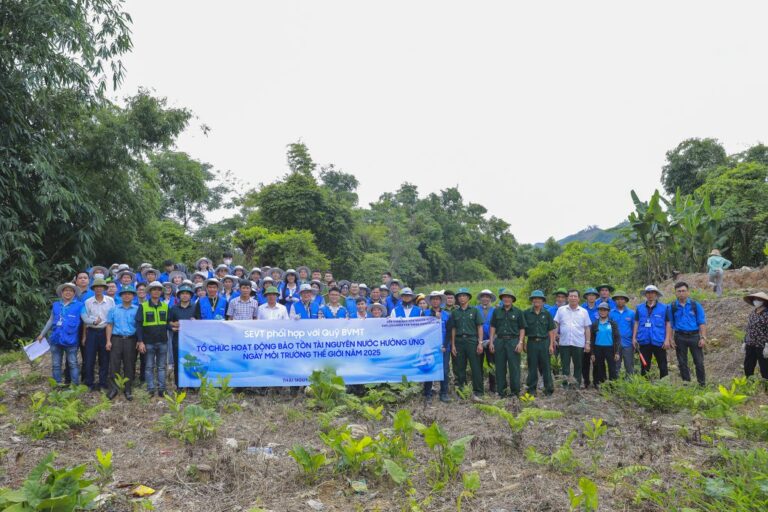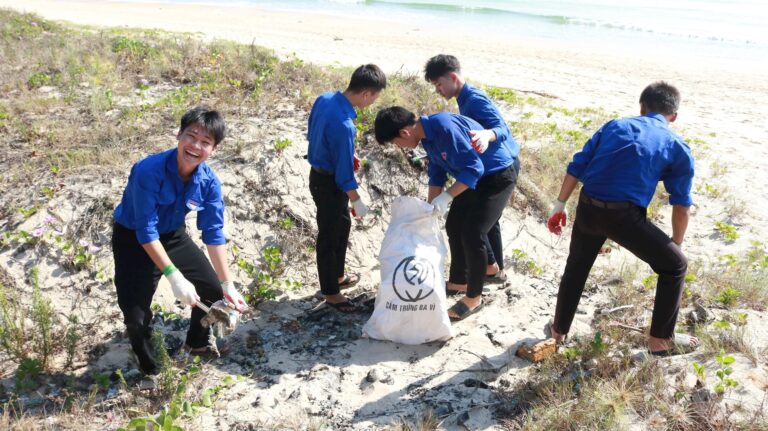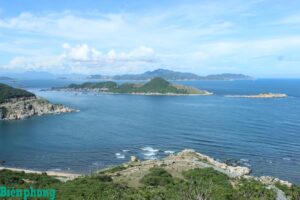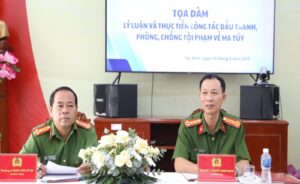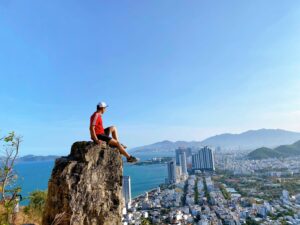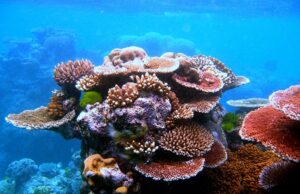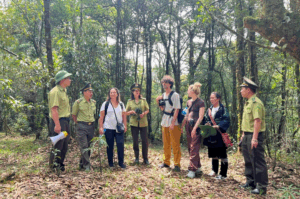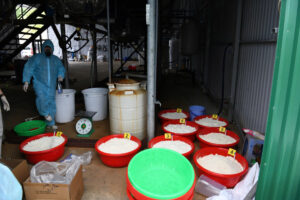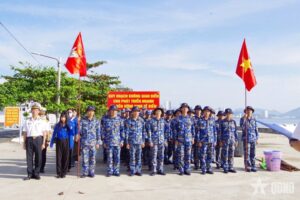Nguyen Thanh Tung lived in Hue for only five years, but its beauty has been deeply carved in his mind. He nurtured for a long time an idea to make a replica of his native city, which had been, for nearly four centuries, the country’s capital imbued with full national cultural and historical identities. Hue was recognized by UNESCO as a World’s Cultural Heritage in 1993.
Tung began to build Ngu Lam Vien in 2002 and completed it in 2007, using the main materials of ground stone powder mixed with cement. Since its opening, hundreds of thousands of visitors have come to see it and they all were deeply impressed by its architecture. Each work in miniature has delicate designs, and in combination they make up a perfect replica of the imperial city of Hue. Ngu Lam Vien faces southwards in the same direction as the original imperial city. The romantic Huong (Perfume) River is re-produced with Ngu Binh Mountain and the two small Hen and Da Vien islets which form a flanking dragon and prostrating tigers to defend the imperial city. 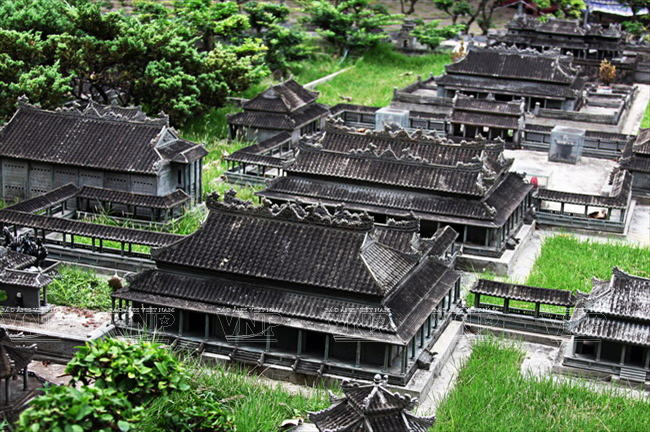
Ngu Lam Vien replicates key constructions of the imperial capital of Hue.
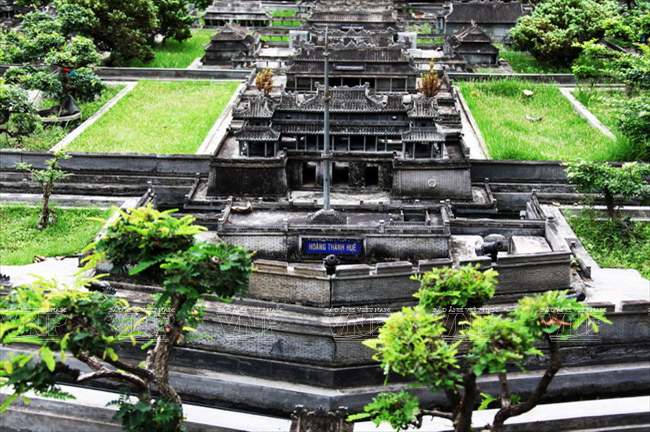 The imperial captial of Hue is replicated according to the original architecture with a ratio of 1/700 in Ngu Lam Vien.
The imperial captial of Hue is replicated according to the original architecture with a ratio of 1/700 in Ngu Lam Vien.
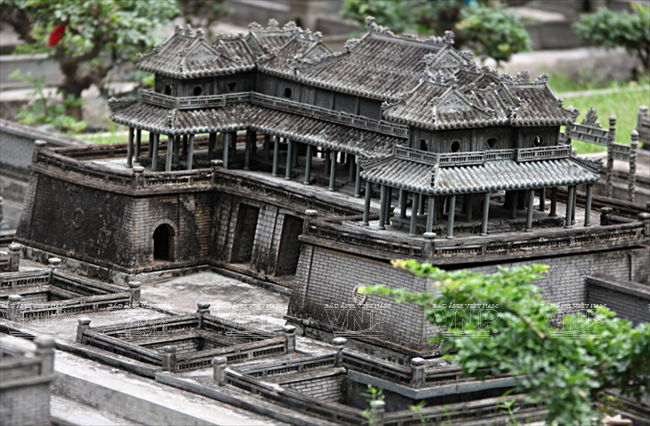
The Royal Citadel is replicated in Ngu Lam Vien. 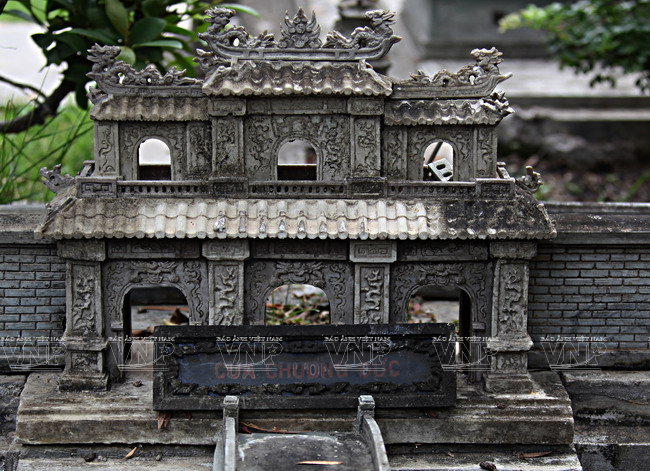
The replica of Chuong Duc Gate.
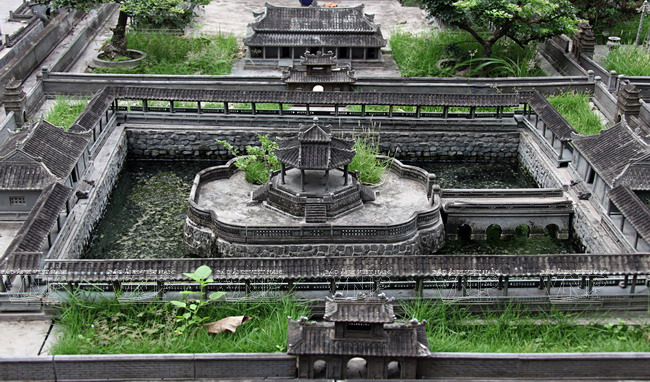 The replica of Co Ha Garden inside the Royal Citadel, established by King Thieu Tri in 1843.
The replica of Co Ha Garden inside the Royal Citadel, established by King Thieu Tri in 1843.
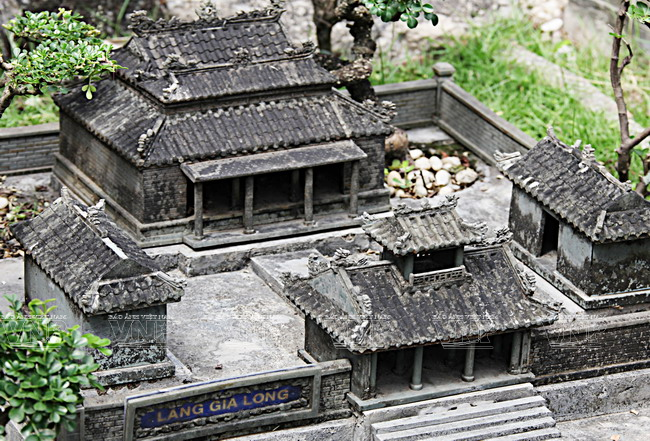 The replica of King Gia Long's tomb.
The replica of King Gia Long's tomb.
 Ngu Lam Vien is replicated as the original architectural style of the imperial city of Hue, using ground stone powder mixed with cement.
Ngu Lam Vien is replicated as the original architectural style of the imperial city of Hue, using ground stone powder mixed with cement.
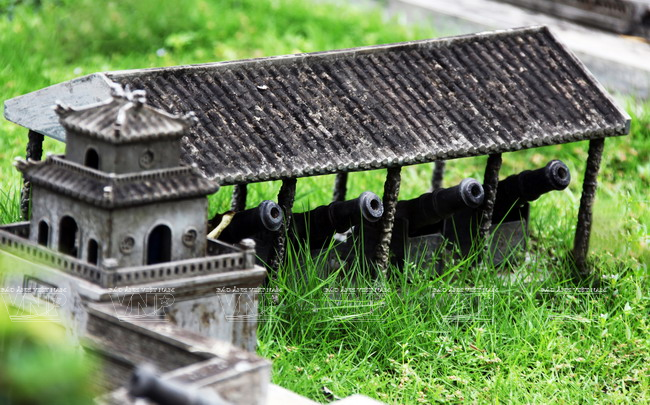 The replica of guns which were used to protect the imperial capital of Hue.
The replica of guns which were used to protect the imperial capital of Hue.
The most impressive feature of Ngu Lam Vien is that it has been reproduced vividly and delicately, including Hoang Thanh (Royal Citadel) and Tu Cam Thanh (Forbidden Citadel). They are separated into circles with the outside being larger than the inside ones and located in the centre of the city facing north-south which forms a focus point for the entire architecture and reflects the supreme power of the royal dynasty. To successfully reproduce images of Hue, Tung has a vast knowledge of its cultural and historical values. He has become a perfect tour guide for visitors who want to know more about the imperial city with full explanations, from the designs on the bricks paved on the ground to the architecture of the citadels’ gates, temples and tombs. Tung said that the citadels’ gates facing eight directions were built in a defense-attack architectural style. Ngo Mon (Noon Gate) not only works as the main entrance, but also reflects the face of Dai Noi (Inner Palace). It has five doors, nine roofs and 100 pillars representing the longevity of the royal dynasty. Meanwhile, the Royal Citadel and the Forbidden Citadel, called Dai Noi (Inner Palace), are in charge of defending the palaces and temples, and residences of the kings and the royal families. Inside the Inner Palace, there are temples for worshipping the kings’ ancestors, all arranged in order. Downstream the Huong River which runs through the imperial city, visitors can see magnificent works, including the Truong Tien Bridge, Van Lau Wharf , Thuong Bac Communal House, Thien Mu Pagoda and Hon Chen Temple. They very closely resemble the original ones. Many researchers of Hue’s culture said that the most value part of Ngu Lam Vien is the successful reproduction of some works that had been heavily damaged during the war time.

The replica of the imperial capital surrounded by the Huong River.
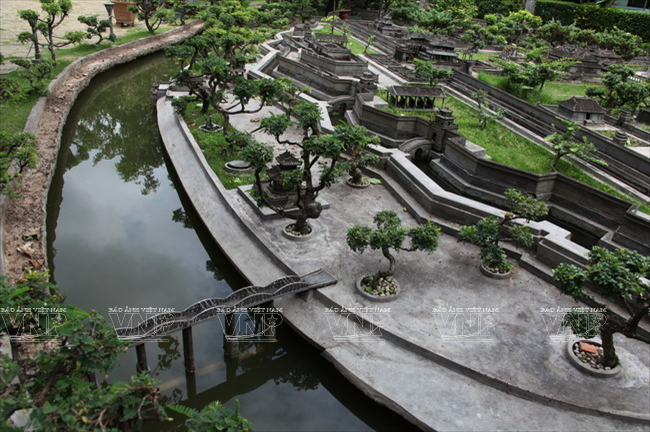 The Truong Tien Bridge on the Huong (Perfume) River.
The Truong Tien Bridge on the Huong (Perfume) River.
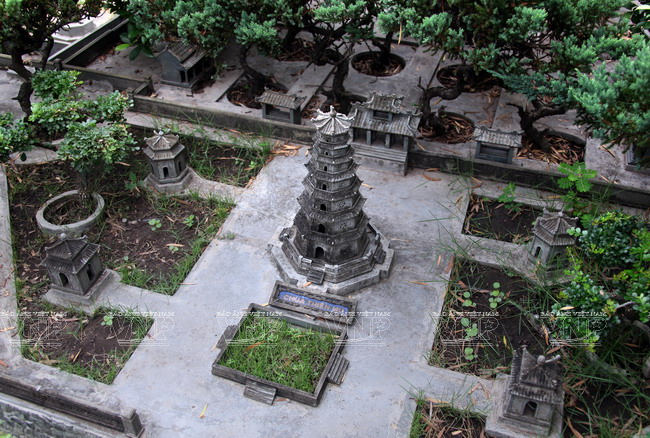 Thien Mu Pagoda is reproduced at Ngu Lam Vien.
Thien Mu Pagoda is reproduced at Ngu Lam Vien.
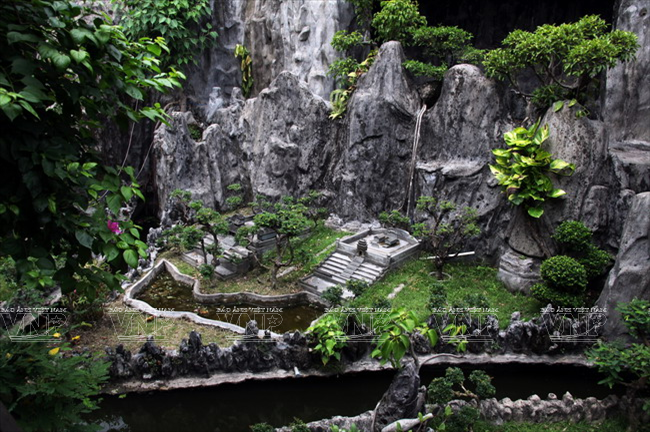 The replica of King Gia Long's tomb which leans on the Ngu Binh Mountain.
The replica of King Gia Long's tomb which leans on the Ngu Binh Mountain.
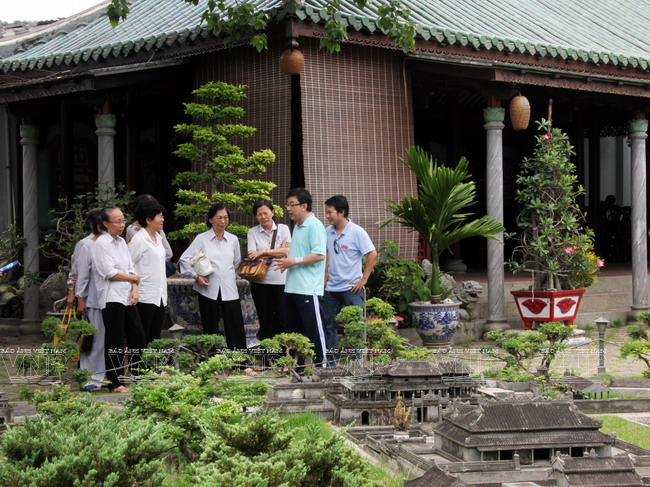 Nguyen Thanh Tung directly introduces tourists to Ngu Lam Vien.
Nguyen Thanh Tung directly introduces tourists to Ngu Lam Vien.
Tung said, Ngu Lam Vien helps visitors, who had been, or not yet been, in Hue, learn more about its beauty and magnificent architecture. They include local and foreign tourists, particularly students and pupils, who come to learn about the history of Vietnam in general, and Hue in particular. “I have not yet visited Hue, but here I can learn much about the imperial city’s history, especially its unique architecture full of cultural and historical values that have spanned many centuries,” said Nguyen Minh Dang, a student from Ho Chi Minh City University of Social Sciences and Humanity.
Story: Nguyen Vu Thanh Dat - Photos: Dang Kim Phuong


